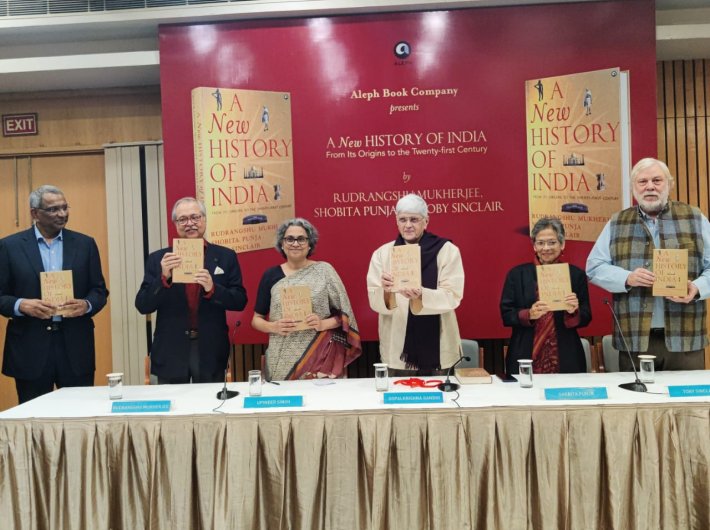A New History of India: From Its Origins to the Twenty-First Century
By Rudrangshu Mukherjee, Shobita Punja and Toby Sinclair
Aleph Books, pp 480, Rs 999
When history is shaping the present like never before, where does a general reader turn to become an informed citizen? There have been several volumes on India’s fascinating history that can serve the purpose, though each can leave readers wishing for something better, something closer to the ideal.
David Davidar, the publisher at Aleph Books Company, must have felt the same, when he called up Rudrangshu Mukherjee and Shobita Punja to write a single-volume history of India for general readers. (The duo at first apparently laughed at the suggestion.) Authors, it is said, write the books they wanted to read but could not find anywhere. Davidar, an accomplished author himself, applies that dictum to himself as a publisher: he wants publish the kind of books he wants to read but are yet to be written.
Locked down at home, Mukherjee (Chancellor and Professor of History at Ashoka University) and Punja (author of over fifteen books including ‘Museums of India’; ‘Divine Ecstasy: The Story of Khajuraho’; and ‘Daughters of the Ocean: Discovering the Goddess Within’) turned to Toby Sinclair (who has been involved in the production of wildlife, history, and cultural documentaries since 1995 and is a director at &Beyond Asia), their friend for decades.
The trio divided the work among themselves, with Mukherjee doing the larger part of writing, Sinclair dipping into his vast trove of photographs clicked across India over the decades, and Punja researching the captions, filling up the gaps.
The result is “one of the best books I ever commissioned,” Davidar said, at the launch event in the capital on Saturday. Coming from India’s best known editor-publisher, it is no hyperbole. “It is such a singular book,” he said, covering not only the long span (from about 4.5 billion years ago to 2020, actually), epochs, dynasties and so on, but also themes such as arts and economy.
Mukherjee found another way of slicing the cake when he said this book works at three different layers: the historical narrative, the photos that tell a comprehensive story in themselves and the captions. That is what is new in this book, he said, as compared to the previously published tomes on Indian history for the general reader. That also explains the adjective ‘new’ in the title.
That intelligence layperson who is the ideal or intended reader of this book, Mukherjee added, because “history is more than an academic discipline; it is a public discipline.” Upinder Singh, the acclaimed historian who moderated a discussion with the authors, acknowledged that it was much more difficult to write for the general audience.
What is new about this book is also the fact that it introduces the reader to the thrill and the zeal of engaging with the story of us, the Indians, in a most engaging manner. In fewer than 500 pages that can be read over a week, and reread for years.
‘A New History of India’ covers all the major landmarks of Indian history from prehistoric times up to the twenty-first century—starting with the country’s geological origins a few billion years in the past and the migration of Homo sapiens from Africa into the region several millennia ago. It traces the evolution of Indian civilization through a multitude of epochs, personalities, and turning points, including the Harappan Culture, Vedic Society, the age of Mahavira and the Buddha, Ashoka and the Mauryas, the Gupta period, the Delhi Sultanate, major kingdoms in the east, west, and south, the Mughal empire, European incursions into the subcontinent, the British Raj, the freedom struggle led by Gandhi, Nehru, Patel, Bose, Tagore, and others, Independence and Partition, and key developments in the life of the modern republic. Deepening the overarching narrative are essays on archaeology, caste, religion, art, architecture, philosophy, language, culture, the economy, and various aspects of the nation’s plural, diverse society. Written by award-winning historian Rudrangshu Mukherjee along with cultural historian Shobita Punja and photographer-archivist Toby Sinclair, A New History of India brings the story of one of the oldest, most complex countries on earth to vivid life by blending state-of-the-art pictures and maps with a text of depth, clarity, and rigorous scholarship.
